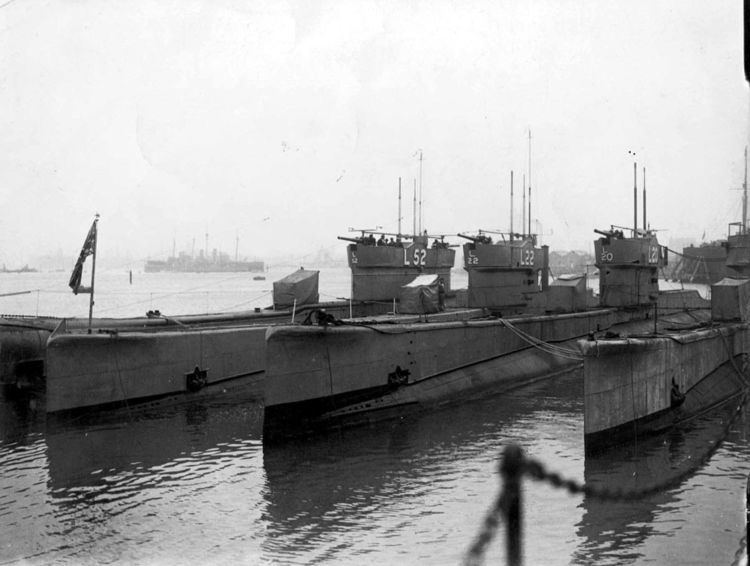In commission 1917 - 1942 Completed 27 | Succeeded by Odin class Planned 73 | |
 | ||
Operators | ||
The British L-class submarine was originally planned under the emergency war programme as an improved version of the British E-class submarine. The scale of change allowed the L class to become a separate class.
The armament was increased when the 21-inch torpedoes came into service. The Group 3 boats had two QF 4-inch guns fore and aft of the lengthened conning tower. Also, 76 tons of fuel oil was carried in external wing tanks for the first time in British submarines. Several of the Group 1 boats were configured as minelayers including L11 and L12. In the Group 2 boats, L14, L17 and L24 to L27 were built as minelayers carrying 16 mines but without the two beam torpedo tubes.
The introduction of the L class came too late to contribute significantly in World War I. L2 was accidentally depth-charged by three American destroyers in early 1918. L12 torpedoed the German submarine UB-90. L10 torpedoed the German destroyer S33 in October 1918 but was sunk by accompanying destroyers.
L55 was sunk in 1919 during the British naval intervention in the Russian civil war by Bolshevik Russian destroyers. She was salvaged by the Russians and was re-commissioned by the Russians with her original service number.
The L class served throughout the 1920s and the majority were scrapped in the 1930s but three remained operational as training boats during World War II. The last three were scrapped in 1946 after long distinguished service.
Parts of uncompleted L-class submarines were used for the Yugoslav Hrabri-class submarines.
